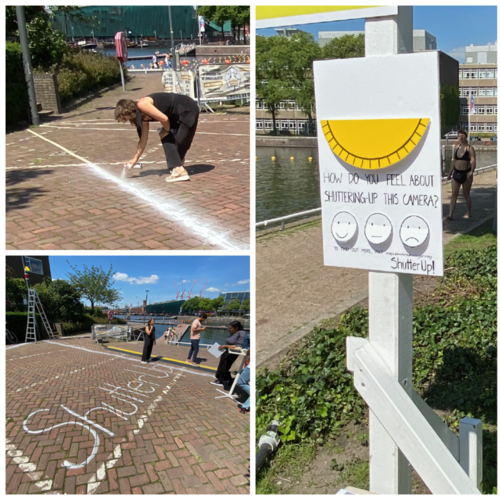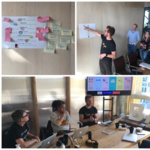4.1 Questions
At this point you have gone through the previous steps and hopefully have gone in depth about what you are doing, why, how, when and where now you really need to consider with whom in your communication plans and consider the following:
- Do I have basic communication strategy (ie. press release, website, etc.)
- When and where do I display information in physical and digital spaces?
- How will I deal with questions from the public and escalation paths?
- Have I considered my audience in my messaging for a comprehensive FAQ?
- There are no cookies in public spaces, what is the opt out form factor for your project?
- Do I have the proper signs and notices? Normally legal compliance in this respect is specific to a given location.
- Data plus dialogue. How can you leverage the data you are generating to engage the public in a productive way?
- Have you thought about visualizing your data and getting people involved in your projects?
4.2 Public Engagement and Communication Examples
Camera Signage & Registry
Different cities have different rules and regulations about where and how to display information about sensors in public spaces as well as with what governing body to register these devices. For example, In Amsterdam it is obligatory to register cameras and sensors that are being used in public spaces with the IoT registry and the information is displayed on an interactive map that is accessible to the public https://www.amsterdam.nl/privacy/camera’-sensoren/
Stakeholder Workshop
We highly recommend that you hold a stakeholder workshop to think about the various whats, hows, whys, when and with whom you should communicate. Again it’s important to be transparent and inclusive not only to inform the public but to do so in ways that show you are respecting their privacy. A good communication strategy that will not only inform but involve the public will have a good ethical framework at its core.
For more information about the TADA data ethics workshop visit https://tada.city/en/home-en/
Community Enagement
Every step of the way you need to consider the public’s needs and sensibilities. Every expert we have interviewed, every partner who has contributed to this toolkit emphasises the importance of engaging the public throughout a crowd sensing project but this is not easy.
One very good example of what is being done here in Amsterdam is City Lab, a project that encourages citizens to contribute ideas and discuss a social theme in the public spaces we are trying to improve. https://www.nemokennislink.nl/pagina/city-lab/
Information Points
Creating opportunities to communicate and engage with the public at the right place and right time will be crucial to the success of your project. Not only about what you are doing in public spaces and why in an appropriate location specific way but also to guide their journey to participation.
At the Marineterrein Living Lab in Amsterdam there are many information points with QR Codes that point citizens to a website where they can learn more about the various projects and how to get involved. https://www.living-lab.nl
Talks, Tours & Workshops
We like to say: seeing is believing. CITIXL, Amsterdam Smart Cities, and the Beuro Marineterrein provide hundreds of tours a year to delegations from around the world. There are several organisations active all over the city that hold Meetups and provide workshops to stimulate open healthy debate about what is going on in our city and this can effectively cross the bridge between the city and the citizen regardless of the nature of your project. We encourage you to explore the possibilities with your crowd sensing project in your city and reach out to the public before, during, and after your project.
A great example is how Amsterdam Smart City offers tours to visitors and delegations: https://amsterdamsmartcity.com/visit












